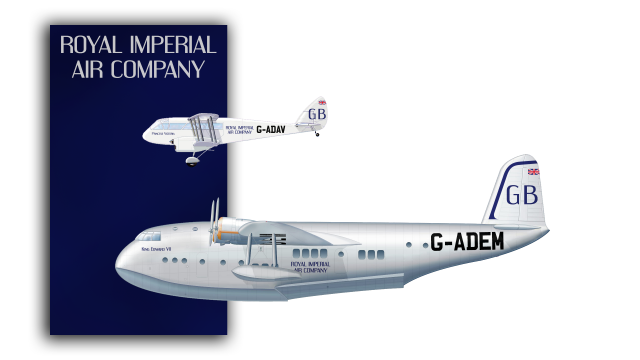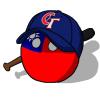Ancient History | 1932-1936
- Owner: POTKC (View all images and albums)
- Uploaded: Oct 18 2018 07:21 PM
- Views: 1,527
- Album Royal Airways
Templates from wbairliner.com, edited by POTKC. Liveries © POTKC 2018, reproduction or use not permitted without written and explicit consent.

(TOP)
Airline - Royal Imperial Air Company
Aircraft - DeHavilland DH.84 Dragon | G-ADAV
Delivered to the Royal Imperial Air Company, 1932
Sold to Liverpool Airways, 1950
Sold to Midlands Air Systems, 1957
Sold to the Midland Air Museum, 1960
Livery - Standard 1919
Country - Great Britain
(BOTTOM)
Airline - Royal Imperial Air Company
Aircraft - Short S.23 Empire | G-ADEM
Delivered to the Royal Imperial Air Company, 1936
Transferred to the Royal Air Force, 1940
Returned to the Royal Imperial Air Company, 1945
Stored in Rochester, Kent, England, 1949
Scrapped in Rochester, Kent, England, 1950
Livery - Standard 1919
Country - Great Britain
The Royal Imperial Air Company was founded in 1919 after the conclusion of the First World War to provide air service to the far corners of the British Empire. It started out with DeHavilland DH.16 and 18 aircraft, operating aircraft such as the Vickers Type 61 Vulcan and the DeHavilland DH.66 Hercules in the 1920. In the late 1928s RIAC began flying the Short S.8 Calcutta on its longest routes, and flew its first large land-based aircraft in the form of the Handley Page HP.42*, which would become the backbone of its long-range fleet throughout the early to mid 1930s. The Armstrong Whitworth AW.15 Atalanta* was used as a shorter-range aircraft on high-demand European routes starting in 1932.
The same year, RIAC began to take delivery of the DeHavilland DH.84 Dragon, which became the airline's main pre-war 'small' aircraft. Due to its ability to land pretty much anywhere and carry the perfect number of passengers on routes that didn't justify an AW.15, the Dragon became a favorite overnight. The second-generation flying boat operated by the Royal Imperial Air Company was the Short S.23 Empire, beloved by pilots for its technological advantage and easy handling and by passengers for its comfort and speed. Both types would stay in operation until some time after World War Two due to their versatility and popularity, however the technological advancements during the war led to both becoming obsolete and being retired by 1950.
*I want to make liveries for these two types (considering their importance in RIAC's history) as soon as I figure out a way to get templates for them.

 Sign In
Sign In Create Account
Create Account















Interesting.